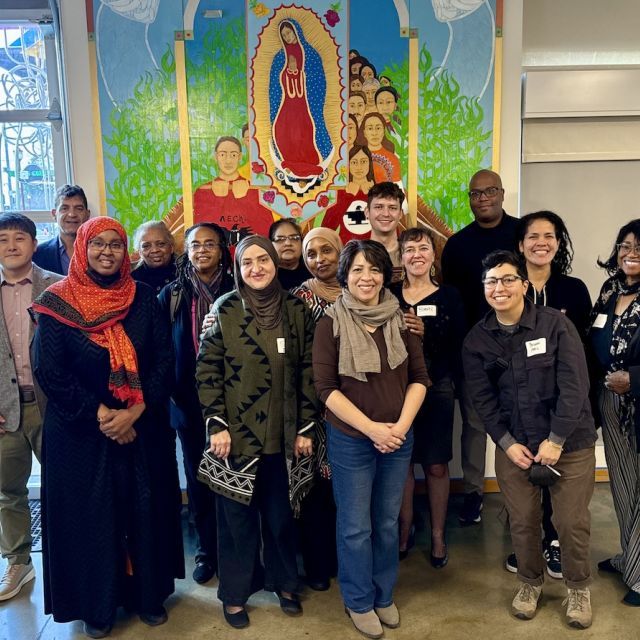Even before the outbreak of Covid-19, some 1.5 million U.S. households received an eviction judgment each year, impacting nearly 3.8 million individuals.
Additionally, there is evidence that the number of informal displacements could be twice as high, leaving over 11 million people at risk of displacement each year when considering both formal and informal evictions. That scale equates to potentially displacing, on an annual basis, more than every single resident of New York City and Chicago – the nation’s first and third most populous cities – combined.
Now, with inflation on the rise and millions of Americans still saying they’re unsure if they’ll be able to afford rent next month, preventing eviction and supporting long-term housing stability are urgent national imperatives. Enterprise Community Partners has just published a new paper, Home for Good: Strategies to Prevent Eviction and Promote Housing Stability. It examines how to get ahead of evictions, recommending interventions before residents fall behind on rent payments – and proposing solutions for how property owners, community organizations, residents and policymakers can work together to prevent displacements.
Drawing on the paper’s insights and resources, here are five ways to stop evictions before they happen.
1. Improve housing stability for renters
It may sound straightforward, but the easiest way to prevent eviction is to ensure renters have housing stability. That means they can stay in their homes, avoid moving from place to place, and stop paying unaffordable rents – 11.1 million renter households in the U.S. are currently spending more than half their income on rent. Upstream approaches – that is, getting ahead of evictions well before they happen – can include reducing housing costs and increasing income through efforts such as guaranteed income programs or emergency financial assistance programs that help families pay bills. Those are clear wins for residents – and for property owners and communities, who also bear costs for every family displaced. Studies suggest overall housing stability can prevent lifelong poverty, and that a stable home leads to better mental and physical health.
Ensuring that affordable rental housing remains affordable is also key to renters’ stability. That’s why Enterprise is launching its Preservation Next toolkit and training academy for developers, paired with technical assistance and grant support. By stabilizing the nation’s existing stock of affordable homes, we can help ensure stability for the families who depend on them.
2. Understand who is most vulnerable to evictions – and intervene early
For government agencies and community organizations, understanding who is most vulnerable to displacement is key to preventing evictions. For people of color, the risk of being evicted is nearly twice as high as that of white renters. A USA TODAY analysis of local and national housing records and data found that Black women are more likely than any other group to face eviction – with Black women renters filed against at twice the rate of white women renters nationwide. Additionally, areas with low median incomes are an important place to target outreach strategies, as are neighborhoods at risk of gentrification-led displacement or displacement driven by redevelopment or zoning changes. Outreach program leaders need to be mindful of linguistic and cultural characteristics of a neighborhood – often community-based organizations are most knowledgeable about residents’ specific needs and are important as eviction prevention programs seek local partnerships.
3. Reduce barriers to safety net programs
From the pandemic, we learned that quickly getting emergency assistance to renters is essential in helping residents keep their homes. Often applications for programs require excessive documentation and are overly bureaucratic. In 2021, the Emergency Rental Assistance Program passed by Congress allowed residents to self-attest to financial hardship rather than requiring them to collect extensive documentation. Grantees could distribute funds directly to residents. And relief dollars could be used for services like legal counsel and other eviction prevention activities. In the end, grantees who took advantage of the flexibilities offered under the program proved to be very successful in distributing funds and keeping renters stably housed.
4. Shift the "landlord/tenant” paradigm to a partnership centered on community
Property owners can play an essential role in helping residents maintain their homes. Doing so not only improves housing stability; it also reduces vacancy as well as costs and time associated with the eviction process. Those costs can often exceed what the renter owes. Before the pandemic, many Americans facing eviction typically were less than $600 behind, while court costs and other fees can mean thousands for a landlord looking to evict a resident. Instead of going through a drawn-out court battle, property owners can establish payment plans, engage mediators who can negotiate with residents, partner with community organizations that reach the most vulnerable residents, and support connections to programs that provide short-term financial assistance for renters. Many property owners, especially nonprofit owners of affordable housing, made great strides during the pandemic to engage and support their residents. We can look to them for best practices on how owners across the housing spectrum can work with residents to achieve mutually desirable outcomes.
5. Provide holistic service delivery programs
Programs that provide direct financial support to renters are essential – but so are community organizations that proactively target at-risk families. Programs in Boston, New York City, Denver, St. Paul and elsewhere educate residents about cash assistance programs and offer assistance in securing public benefits, make referrals to job training and education programs, connect residents to financial counseling and mediation services, and provide legal referrals. The most successful of these programs are often neighborhood-based and offer a holistic range of services that support housing stability and help families stay in their homes.
Read our new paper, Home for Good: Strategies to Prevent Eviction and Promote Housing Stability, to learn more about investing in prevention to help promote family and community stability.



